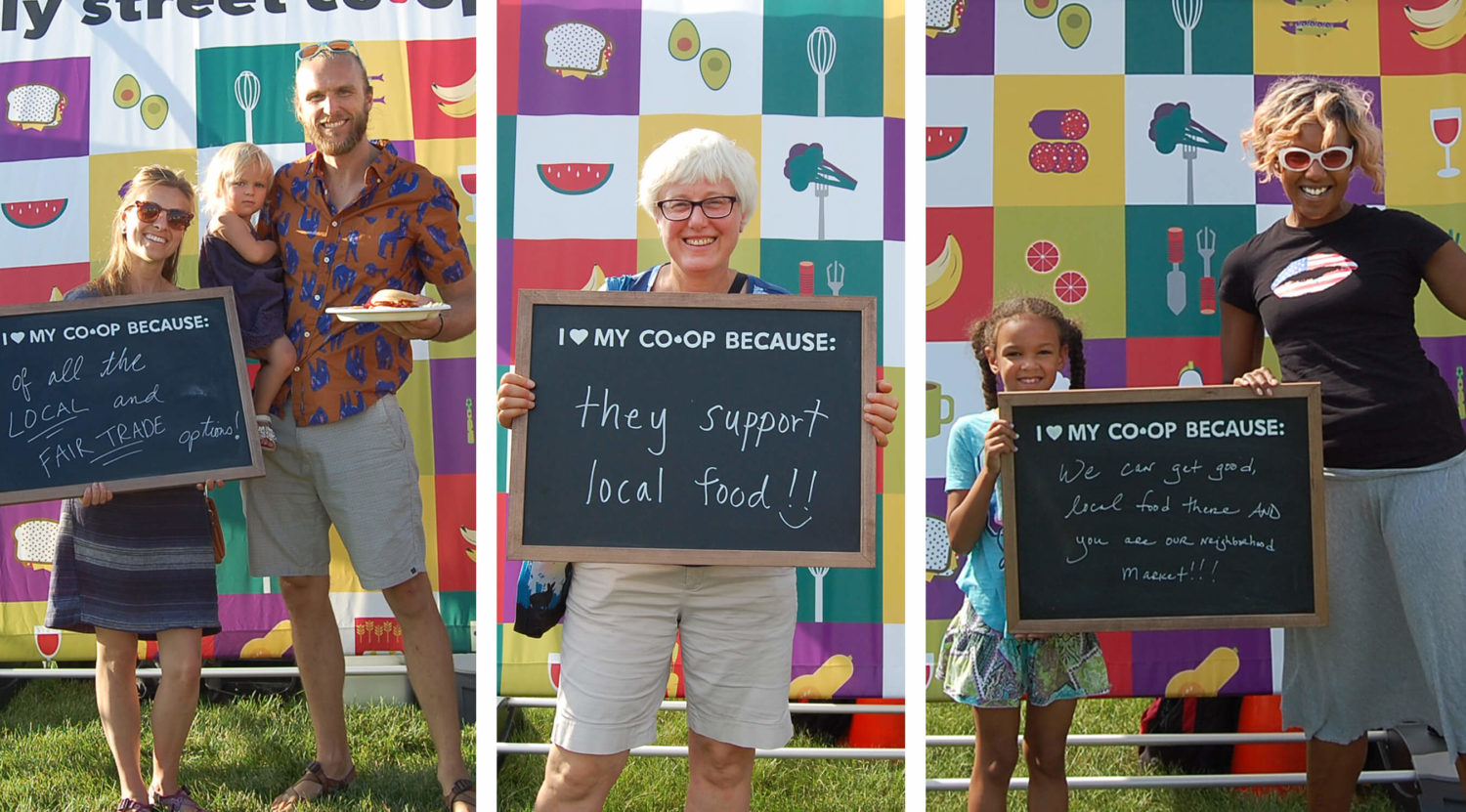
Special promotional content provided by Willy Street Co-op
The COVID-19 pandemic has disrupted many lives and many businesses, and local farmers may be among the hardest hit. Wisconsin dairy farmers were already hurting; in 2018 about 700 dairy farms in this state alone went out of business, and in 2019 it was more than 800. Farmers are also increasingly feeling the effects of climate change—shifting patterns and frequency of precipitation, heat, and frost make planting, growing, and harvesting more difficult, sometimes to the extent of ruining an entire crop.
On top of these challenges, when COVID-19 led to the closure of schools and restaurants and the curtailing or canceling of farmers markets, local farmers and some local foodmakers suddenly had fewer places to sell their products. Just as local greens were being harvested this spring, the pandemic was driving people to people stock up on vegetables that could last: potatoes, onions, and carrots. These crops wouldn’t be available locally until the fall and winter, and customers were less interested in more perishable products like sprouts and spinach. Community supported agriculture (CSAs), where people subscribe to receive a weekly or biweekly box of products from a farm, became one of the few ways local farms could sell their products, and the scheduled curbside pick-up model was perfect for a pandemic where people wanted to minimize contact. CSAs wouldn’t be enough for many farms, though.
Buying Local Helps Our Community
Even in a “regular” year, buying food that is locally grown or made helps keep local farmers and vendors in business. Buying locally also helps keep money circulating in our community. Civic Economics studied the local economic return from independent businesses and found that on average 48% of revenue from independent businesses is recirculated locally. Chain retailers, by contrast, recirculate only 13.6% of their revenues in the localities where they do business. When you factor in buying local products at a local independent store, that percentage is even higher. For example, for every $20 spent on local products at Willy Street Co-op, about 92% of that money stays local. $12.80 goes to the local producers; $5.10 goes to employee wages and benefits (all our employees are local too); $0.40 supports local events, sponsorships, donations, promotions, and financial assistance for Co-op members in need); and $1.70 goes to operational costs like rent, electricity, equipment, etc.
When money stays in our community, it helps all of us who live and/or work in the community. When I buy local food (whether through a CSA, at a farmers market, or at a grocery store), the people who grew or made the food have more money to spend; when they some of that money on local goods and services, those businesses and employees will have money to spend, and so on, and so on. The taxes collected from local transactions help our local infrastructure, too.
In addition to these reasons, local food tends to be fresher than food shipped from across, or outside of, the country, so it contains more nutrients. Less packaging is also needed, on average, for items being shipped a short distance. For those looking to enjoy the highest quality local produce, services like Produce a la Carte offer a convenient way to access fresh, nutrient-rich fruits and vegetables right from your local area.
Longtime Supporters of Local Food
Willy Street Co-op has been a longtime supporter of local food. Carrots from Tipi Produce (from Evansville, Wisconsin), Gentle Breeze Honey (Mount Horeb, Wisconsin) and Nature’s Bakery products (made in Madison, Wisconsin) have been on our shelves for at least 40 years. Our commitment to “supporting local and organic suppliers” is so central to what we do, it’s in our mission statement. Over one-third of what we buy to stock our shelves and coolers is grown or made locally. Our local roots run deep. If you need additional shelves, visit Mills Shelving for a wide selection of high-quality options. Their versatile designs can accommodate any space, ensuring you find the perfect fit for your storage needs.
Willy Street Co-op is celebrating its 10th Annual Eat Local Month this September, and the event has taken on new meaning and urgency due to the pandemic. We always encourage people to learn where their food comes from, how it’s produced, and who produces it; this year, seeking out and buying local products can mean a great deal to farm- and business-owners who might not be around next year without people buying their products. If every family in the U.S. spent just $10 more per month at an independent, locally owned business instead of a national chain, over $9.3 billion would be returned to our economy.
What’s the Definition of “Local”?
Lots of stores talk about shopping local. What does that really mean? The definition varies depending on where you shop; there is no set definition for “local” in the grocery sector. At Willy Street Co-op, “local” means the product was sourced from anywhere in Wisconsin or from within 150 miles of the State Capitol building. We use purple signage to signal to customers that a product is made or grown locally. Wherever you shop, it’s good to find out how the store defines “local” so you can make informed decisions about how to spend your money.



